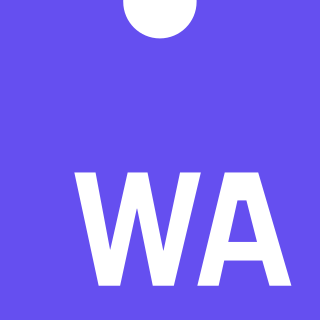
Java applets were small applications written in the Java programming language, or another programming language that compiles to Java bytecode, and delivered to users in the form of Java bytecode. The user launched the Java applet from a web page, and the applet was then executed within a Java virtual machine (JVM) in a process separate from the web browser itself. A Java applet could appear in a frame of the web page, a new application window, a program from Sun called appletviewer, or a stand-alone tool for testing applets.

Java is a high-level, class-based, object-oriented programming language that is designed to have as few implementation dependencies as possible. It is a general-purpose programming language intended to let programmers write once, run anywhere (WORA), meaning that compiled Java code can run on all platforms that support Java without the need to recompile. Java applications are typically compiled to bytecode that can run on any Java virtual machine (JVM) regardless of the underlying computer architecture. The syntax of Java is similar to C and C++, but has fewer low-level facilities than either of them. The Java runtime provides dynamic capabilities that are typically not available in traditional compiled languages.

A Java virtual machine (JVM) is a virtual machine that enables a computer to run Java programs as well as programs written in other languages that are also compiled to Java bytecode. The JVM is detailed by a specification that formally describes what is required in a JVM implementation. Having a specification ensures interoperability of Java programs across different implementations so that program authors using the Java Development Kit (JDK) need not worry about idiosyncrasies of the underlying hardware platform.
Java Platform, Standard Edition is a computing platform for development and deployment of portable code for desktop and server environments. Java SE was formerly known as Java 2 Platform, Standard Edition (J2SE).
In software design, the Java Native Interface (JNI) is a foreign function interface programming framework that enables Java code running in a Java virtual machine (JVM) to call and be called by native applications and libraries written in other languages such as C, C++ and assembly.
Apache Harmony is a retired open source, free Java implementation, developed by the Apache Software Foundation. It was announced in early May 2005 and on October 25, 2006, the board of directors voted to make Apache Harmony a top-level project. The Harmony project achieved 99% completeness for J2SE 5.0, and 97% for Java SE 6. The Android operating system has historically been a major user of Harmony, although since Android Nougat it increasingly relies on OpenJDK libraries.

Java is a set of computer software and specifications that provides a software platform for developing application software and deploying it in a cross-platform computing environment. Java is used in a wide variety of computing platforms from embedded devices and mobile phones to enterprise servers and supercomputers. Java applets, which are less common than standalone Java applications, were commonly run in secure, sandboxed environments to provide many features of native applications through being embedded in HTML pages.
In software development, the programming language Java was historically considered slower than the fastest third-generation typed languages such as C and C++. In contrast to those languages, Java compiles by default to a Java Virtual Machine (JVM) with operations distinct from those of the actual computer hardware. Early JVM implementations were interpreters; they simulated the virtual operations one-by-one rather than translating them into machine code for direct hardware execution.
Eclipse OpenJ9 is a high performance, scalable, Java virtual machine (JVM) implementation that is fully compliant with the Java Virtual Machine Specification.

Azul Systems, Inc. develops runtimes for executing Java-based applications. Azul Systems, founded in March 2002, Azul Systems has headquarters in Sunnyvale, California.
The Java Development Kit (JDK) is a distribution of Java technology by Oracle Corporation. It implements the Java Language Specification (JLS) and the Java Virtual Machine Specification (JVMS) and provides the Standard Edition (SE) of the Java Application Programming Interface (API). It is derivative of the community driven OpenJDK which Oracle stewards. It provides software for working with Java applications. Examples of included software are the Java virtual machine, a compiler, performance monitoring tools, a debugger, and other utilities that Oracle considers useful for Java programmers.
The Maxine virtual machine is an open source virtual machine that is developed at the University of Manchester. It was formerly developed by Sun Microsystems Laboratories, since renamed Oracle Labs. The emphasis in Maxine's software architecture is on modular design and code reuse for flexibility, configurability, and productivity for industrial and academic virtual machine researchers. It is one of a growing number of Java virtual machines written entirely in Java in a meta-circular style. Examples include Squawk and Jikes RVM.

GraalVM is a Java Development Kit (JDK) written in Java. The open-source distribution of GraalVM is based on OpenJDK, and the enterprise distribution is based on Oracle JDK. As well as just-in-time (JIT) compilation, GraalVM can compile a Java application ahead of time. This allows for faster initialization, greater runtime performance, and decreased resource consumption, but the resulting executable can only run on the platform it was compiled for. It provides additional programming languages and execution modes. The first production-ready release, GraalVM 19.0, was distributed in May 2019. The most recent release is GraalVM for JDK 22, made available in March 2024.

WebAssembly defines a portable binary-code format and a corresponding text format for executable programs as well as software interfaces for facilitating interactions between such programs and their host environment.
JDK Flight Recorder is an event recorder built into the OpenJDK Java virtual machine. It can be thought of as the software equivalent of a Data Flight Recorder in a commercial aircraft. It captures information about the JVM itself, and the application running in the JVM. There is a wide variety of data captured, for example method profiling, allocation profiling and garbage collection related events. The JDK Flight Recorder was designed to minimize the Observer Effect in the profiled system, and is meant to be always on in production systems. The technology was open sourced in 2018.
Quarkus is a Java framework tailored for deployment on Kubernetes. Key technology components surrounding it are OpenJDK HotSpot and GraalVM. The goal of Quarkus is to make Java a leading platform in Kubernetes and serverless environments while offering developers a unified reactive and imperative programming model to optimally address a wider range of distributed application architectures.






